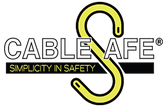Contributor: CableSafe®

Working at heights could be required in several industries and it might be a part of your everyday job. Some occupations are more dangerous than others depending on the nature of the task, but regardless of the height you are dealing with; work at height safety should be established and rigorously followed in order to avoid any serious outcomes. Work at height injuries can have a devastating impact on organizations in terms of lost time, money, and manpower. Employers must incorporate safety tips for working at heights in order to keep their employees safe and their businesses running effectively.
FAQ
How do you make working at heights safe?
The first and most important thing to do before commencing work at height is to identify all potential hazards related to the task. Conduct detailed risk assessments for each work at height activity and ensure that all work is planned, organized, and carried out by a qualified individual/team. Employers must consider the following safety tips for working at heights to ensure the safety of their employees:
- Make sure that employees are wearing the right protection gear (PPE).
- Always strive to work in groups to avoid working alone. If lone working is inevitable, send skilled persons to do the task and establish a system ensuring lone workers are checked on at regular intervals.
- Provide appropriate training to a workforce that can help employees to work safely and also arrange refresher training sessions in order to keep your employees up to date.
What type of protection is needed when working at heights?
Work at height safety is critical for employers when it comes to employee safety, but the level of protection necessary varies depending on the frequency of work, task duration, and work location. It is preferable to avoid working at heights as much as possible, but if it is inevitable, the task must be completed on a secure platform with sufficient edge protection in place to eliminate the risk of falling. The following points must be considered while choosing the protection equipment:
- Evaluate your working environment and conduct extensive research before deciding on the type of PPE that will provide your staff with the comfort, support, and ease to move to accomplish their tasks properly. Fall arrest systems, positioning systems, suspension systems, and retrieval systems are examples of personal protective equipment used when working at height.
- Before commencing work at height, thoroughly assess the work scenario and choose the best piece of equipment for the task at hand, whether it’s a scaffold, a ladder, or a lift.
- Harnesses and lanyards must be selected based on the employee work requirements and working conditions, as there is no such thing as a one-size-fits-all approach in fall arrest systems.
- Choose the anchor point carefully; it should be strong enough to withstand not just the weight of the body, but also 5000 lbs. per person attached.
- Before selecting a fall protection system, make sure you understand the fall distance and have completed your calculations so that you can give the best protection to each employee.